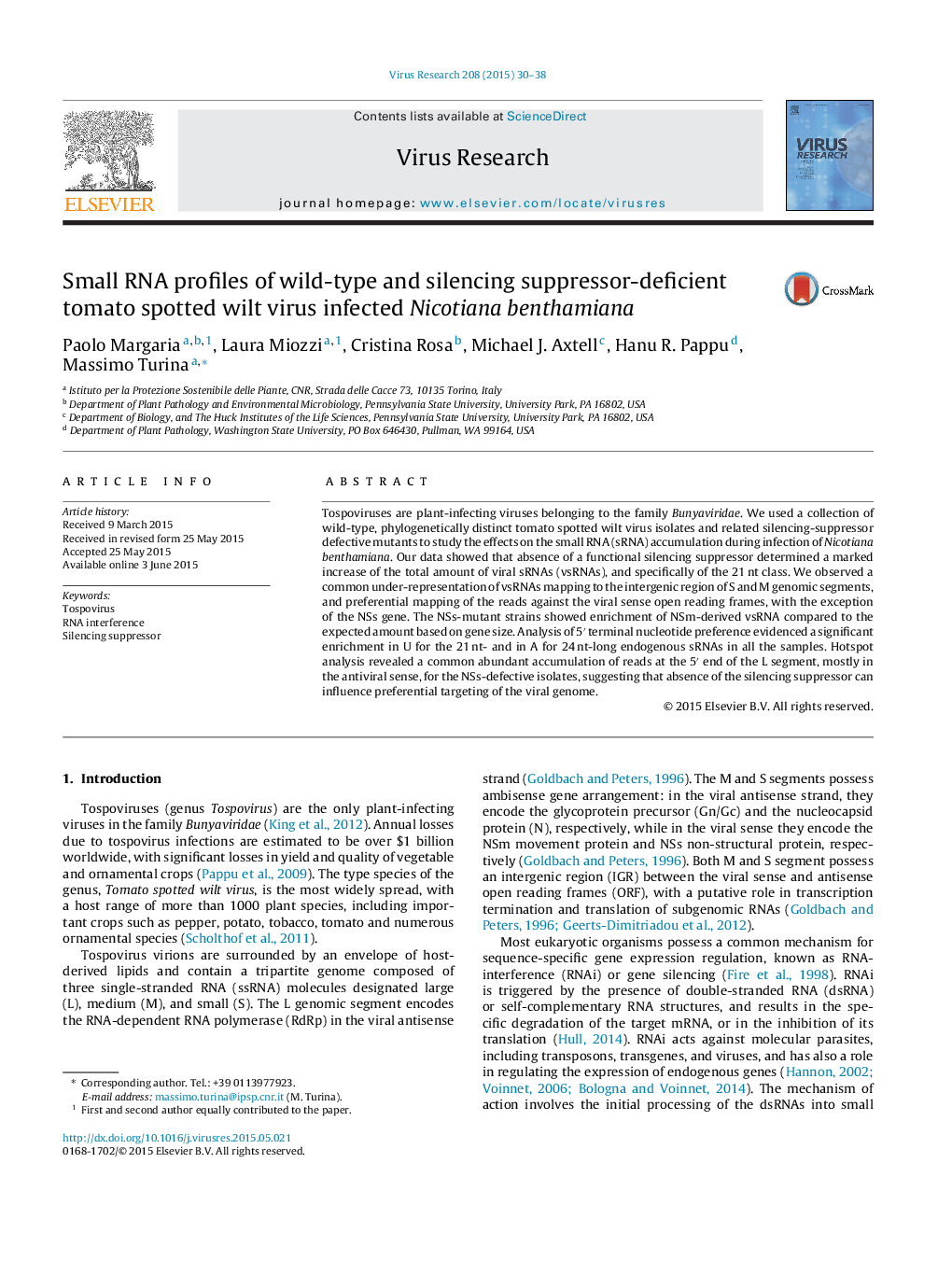| Article ID | Journal | Published Year | Pages | File Type |
|---|---|---|---|---|
| 3428111 | Virus Research | 2015 | 9 Pages |
•No evidence of accumulation of vasiRNAs in TSWV infected N. benthamiana.•First paper reporting on the sRNA profile of N. benthamiana infected with NSs defective TSWV.•Lack of silencing suppressor increases the amounts of 21nt vsRNA.•Lack of silencing suppressor enriches the vsRNA mapping to the NSm ORF.•Lack of silencing suppressor increases the vsRNA mapping to the carboxy terminal of the RdRP ORF.
Tospoviruses are plant-infecting viruses belonging to the family Bunyaviridae. We used a collection of wild-type, phylogenetically distinct tomato spotted wilt virus isolates and related silencing-suppressor defective mutants to study the effects on the small RNA (sRNA) accumulation during infection of Nicotiana benthamiana. Our data showed that absence of a functional silencing suppressor determined a marked increase of the total amount of viral sRNAs (vsRNAs), and specifically of the 21 nt class. We observed a common under-representation of vsRNAs mapping to the intergenic region of S and M genomic segments, and preferential mapping of the reads against the viral sense open reading frames, with the exception of the NSs gene. The NSs-mutant strains showed enrichment of NSm-derived vsRNA compared to the expected amount based on gene size. Analysis of 5′ terminal nucleotide preference evidenced a significant enrichment in U for the 21 nt- and in A for 24 nt-long endogenous sRNAs in all the samples. Hotspot analysis revealed a common abundant accumulation of reads at the 5′ end of the L segment, mostly in the antiviral sense, for the NSs-defective isolates, suggesting that absence of the silencing suppressor can influence preferential targeting of the viral genome.
